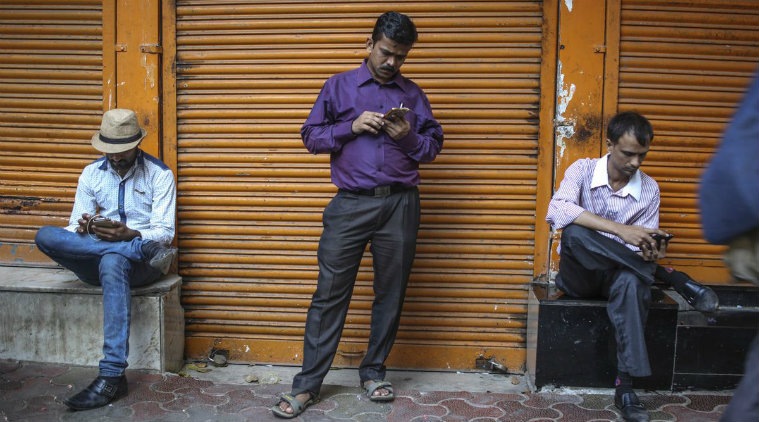5G coming to India by 2022 after pit stops in Korea and China
The new technology has advantages of massive connectivity, low power consumption and boasts of download speeds and capacity that can enable autonomous vehicles, drones, remotely assisted surgeries and traffic control.
 India’s telecom regulator too last week proposed floor prices for auctioning spectrum dedicated for 5G roll out although the auction dates are yet to be announced. (Image: Bloomberg)
India’s telecom regulator too last week proposed floor prices for auctioning spectrum dedicated for 5G roll out although the auction dates are yet to be announced. (Image: Bloomberg)
India plans to roll out state-of-the-art 5G telecom services in the next four years, a senior official said, as the nation rushes to catch up with its Asian peers.
“We are not there yet,” Telecom Secretary Aruna Sundararajan said in an interview in New Delhi, adding that complete roll-out of 5G will be done by 2022. “5G won’t be driven by supply, it’ll be driven by demand and the rest of industry needs to wake up to this.”
The South Asian nation, traditionally a laggard while embracing latest technology in telecommunications, will follow South Korea, Japan and China where 5G service will be offered within the next two years. The high-speed and low latency service will help Prime Minister Narendra Modi’s Digital India plan, which seeks to broaden Internet access, and the Smart Cities initiative.
“If we want smart cities, clearly we need smart infrastructure for it,” Sundararajan said, adding some early stage projects may start rolling out as early as 2020.
The new technology has advantages of massive connectivity, low power consumption and boasts of download speeds and capacity that can enable autonomous vehicles, drones, remotely assisted surgeries and traffic control.
A slight delay, however, might actually be beneficial for India, according to Sanford C. Bernstein’s Hong Kong-based analyst Christopher Lane, who expects South Korea to launch these services by March 2019, Japan in late 2019 and China, along with most western major cities, in 2020.
“India needs China to launch to drive economies of scale and lower cost 5G handsets. I think 2022 or later is appropriate for India,” Lane said in an email.
Also Read: Telecom gear makers applaud TRAI recommendations to boost local manufacturing of equipment
South Korea, which recently tested its 5G technology during the Winter Olympics in February with self-driving cars, virtual reality games and a motion-detection system to ward off menacing wild boars, is planning an airwaves auction to commercially deploy 5G wireless services. Japanese firms are gearing up, as are the U.S. carriers. Italy is targeting a September auction of spectrum that could be used for 5G while the U.K. sold bandwidth in April that included some earmarked for these services. The Hong Kong government is even considering giving airwaves away for free.
India’s telecom regulator too last week proposed floor prices for auctioning spectrum dedicated for 5G roll out although the auction dates are yet to be announced.
Fiber Network
As part of the roll-out, India is aiming to increase its fiber backbone to 2.5 million kilometers (1.6 million miles) by 2022 from 1.5 million kilometers right now. A denser fiber network will aid operators gear up for speedier content-heavy 5G services and move away from discount-led battle for market share underway after upstart Reliance Jio Infocomm Ltd. debuted with 4G services and offered free voice calls in 2016.
“A robust optic fiber network is also very important, both for front haul and the back haul,” said Anthea Lai, a Bloomberg Intelligence analyst in Hong Kong. “The more fiber the better it is for 5G services.”
Also Read: Telecom dept asks India Inc if it can block Facebook, Instagram, WhatsApp in specific situations
So far, telecom infrastructure has got second place to physical infrastructure as Asian nation struggled to beef up its roads, ports and airports.
“Digital infrastructure is invisible infrastructure. Just because it’s invisible, people are not willing to spend on it and promote it,” said Sundararajan. “And that needs to change.”







